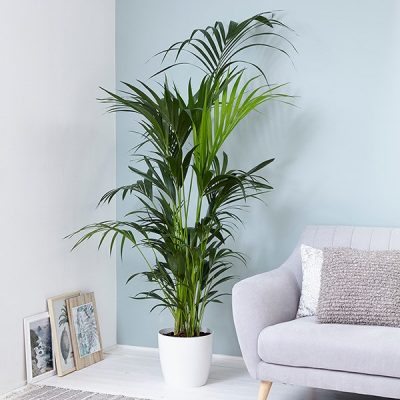Plant Bio
Kentia palm (Howea forsteriana) is a popular choice among interior decorators because it is well suited for container growing. This elegant palm does very well indoors since it is extremely durable and slow growing. The Kentia palm is native to Lord Howe Island (off the eastern Australian coast) where it can reach an impressive height of 60 feet. For indoor containerized growing, heights can fall anywhere between 5 to 12 feet. Kentias have upright slender trunks and long arching, feathered, dark green leaves (also known as fronds).
They adapt to a wide range of soil, from clay to loam and acidic to alkaline. Plant container-grown Kentia in well-draining potting mix, preferably on the sandy side. Once established, Kentia palm plants are fairly drought tolerant, although they do not like to be overly dry, or for that matter overly wet. Water only when the top inch or so (2.5 cm.) of the soil starts to dry out. Mist indoor Kentia palm occasionally to provide some humidity and to remove any dust build-up. They adapt to a wide range of soil, from clay to loam and acidic to alkaline. Plant container-grown Kentia in well-draining potting mix, preferably on the sandy side. Once established, Kentia palm plants are fairly drought tolerant, although they do not like to be overly dry, or for that matter overly wet. Water only when the top inch or so (2.5 cm.) of the soil starts to dry out. Mist indoor Kentia palm occasionally to provide some humidity and to remove any dust build-up. Once Kentia palm plants have established, they require very little care. Feed your container-grown plants with a controlled release fertilizer with an NPK ratio of about 3-1-2. Excessive fertilization may cause the tips of lower leaves to turn brown and die.







